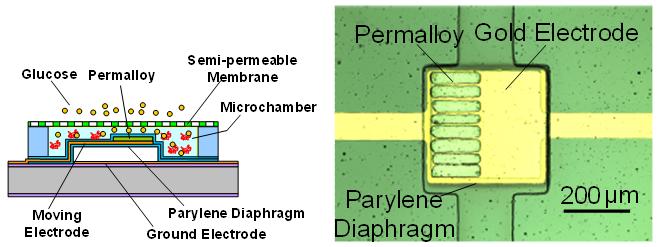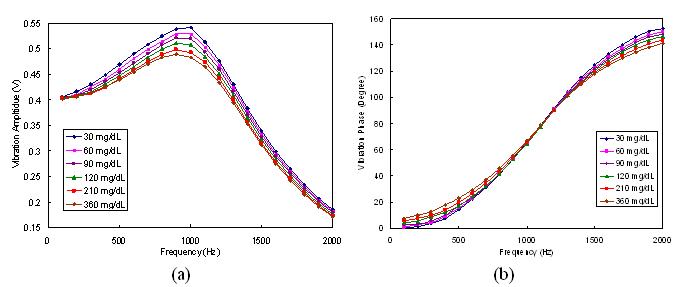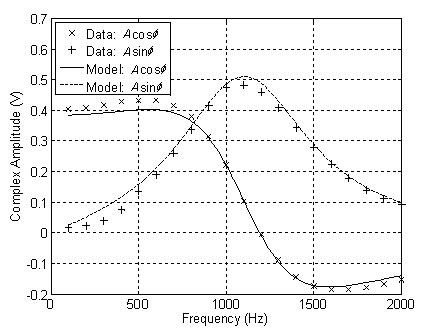| People | Research |
|
Viscometric MEMS affinity glucose sensors for continuous glucose monitoring
The MEMS affinity glucose sensors we have developed primarily measure viscosity changes
of glucose-sensitive polymer solution. The glucose-sensitive solution was initially based on concanavalin A (Con A),
a protein that binds specifically to glucose. To overcome the lack of biocompatibility and stability of Con A, we
have recently been using poly(acrylamide-ran-3-acrylamidophenylboronic acid) (PAA-ran-PAAPBA), a synthetic,
biocompatible, glucose-specific polymer that was developed in the lab of Professor Qian Wang specifically for this
project. The MEMS viscometric glucose sensors consist of a magnetically vibrational element (a cantilever or diaphragm)
inside a microchamber that is equipped with a semi-permeable membrane and filled with a PAA-ran-PAAPBA solution.
Glucose permeates through the semi-permeable membrane and binds reversibly to the polymer, causing crosslinking of the
polymer and changing the viscosity of the solution. The viscosity change causes variations in the viscous damping on the
cantilever or diaphragm vibration. Vibration measurements by optical or capacitive methods thus allow determination of
the ISF glucose concentration. Our experimental results show that the devices are capable of accurately determining
glucose concentrations with excellent repeatability and reversibility as well as minimal drifts. The use of magnetic
vibration generation and capacitive sensing is amenable to making the device fully implantable, wirelessly interrogated
for long-term glucose monitoring, which is being pursued in ongoing work.  MEMS affinity glucose sensing for continuous glucose monitoring. The glucose sensor is implanted in subcutaneous tissue; glucose permeates into and out of the device through a semi-permeable membrane, allowing measurement of the glucose level in interstitial fluid.  A MEMS viscometric glucose sensor. A Parylene diaphragm, embedded with permalloy, is set in vibration by a remotely applied magnetic field. The upper side of the diaphragm is exposed to a solution of PAA-ran-PAAPBA, a synthetic, biocompatible, glucose-specific polymer. A moving electrode is embedded in the diaphragm, forming a capacitive sensor with a ground electrode. As glucose binding with the polymer changes the solution viscosity and the viscous vibration damping, capacitive measurement of the diaphragm vibration allows determination of the glucose concentration.  Frequency-dependent behavior of the harmonically driven vibration of the sensor diaphragm at physiologically relevant glucose concentrations: (a) amplitude, and (b) phase shift.  A 1-DOF mass-spring-damper model fitted to the experimental data obtained at a glucose concentration of 90 mg/dL. A single set of parameters(vibration amplitude expressed in circuit output voltage = 0.38 V, natural frequency in vacuum = 1190 Hz, and damping ratio = 0.39) allow the model to fit two sets of data, which are experimentally determined values of the real and imaginary parts of the complex vibration amplitude.
|